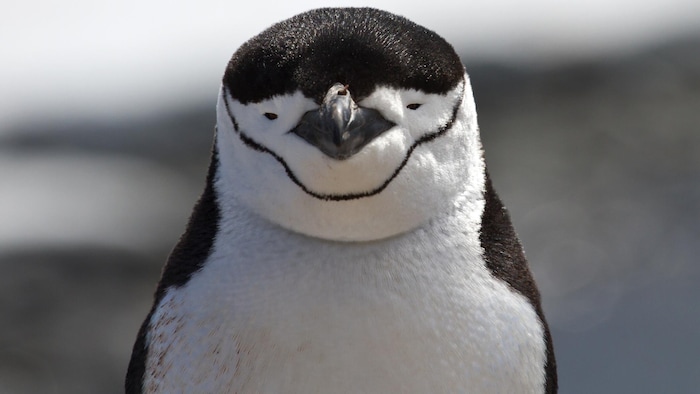Open in full screen mode Close-up of the head of a Pygoscelis antarcticus. Agency France-Presse Feature being tested Log inCreate my account Speech synthesis, based on artificial intelligence, makes it possible to generate spoken text from written text. In humans, x27;dozing off unexpectedly for a few seconds is a sign of fatigue and can be dangerous in certain situations, for example while driving. But chinstrap penguins take more than 10,000 micronaps of four seconds on average per day, according to a study published in the journal Science (New window) (in English). This allows them to accumulate more than 11 hours of daily sleep. This species could have developed this trait because of the need to remain constantly vigilant, according to the authors of this work.
Chinstrap penguins have an estimated population of nearly 8 million breeding pairs
According to them, this study shows that the benefits of sleep can be cumulative even if it is fragmented, contrary to belief until now. At least in some species.
Chinstrap penguins (Pygoscelis antarcticus) have an estimated population of nearly 8 million breeding pairs and live mainly on the Antarctic Peninsula and islands in the southern Atlantic Ocean.
Loading
François Legault asks teachers' unions to “stop the strike”
ELSE ON NEWS: François Legault asks teachers unions to “stop the strike”
During the nesting period, penguins must watch over their eggs, in order to protect them, for example, from predatory birds, while their partner goes in search of food, sometimes for several days in a row. Males and females take turns making these journeys.
The team of researchers, led by Paul-Antoine Libourel from the Neuroscience Research Center from Lyon, implanted electrodes on 14 penguins from a colony on King George Island in December 2019.
They recorded electrical activity in their brains and neck muscles, and accelerometers and GPS were used to record their movements and locations. All combined with direct observations and video recordings.
Result: the penguins fell asleep standing up or when lying down to brood their eggs, lasting an average of 3.91 seconds, more than 10,000 times per day.
Those on the periphery of the group slept longer, probably due to the higher noise level and physical contact with other penguins in the center of the colony.
The researchers did not directly measure whether these micronaps actually allowed the penguins to rest, but since they were able to reproduce, they deduced that this was indeed the case.
In humans, on the other hand, excessively interrupted sleep, for example in the case of sleep apnea, has consequences on cognitive functions, and could even accelerate neurodegenerative diseases like Alzheimer's.
Thus, what is abnormal in humans could be perfectly normal in birds and more. ;other animals, at least under certain conditions, scientists wrote in a commentary also published in Science.
